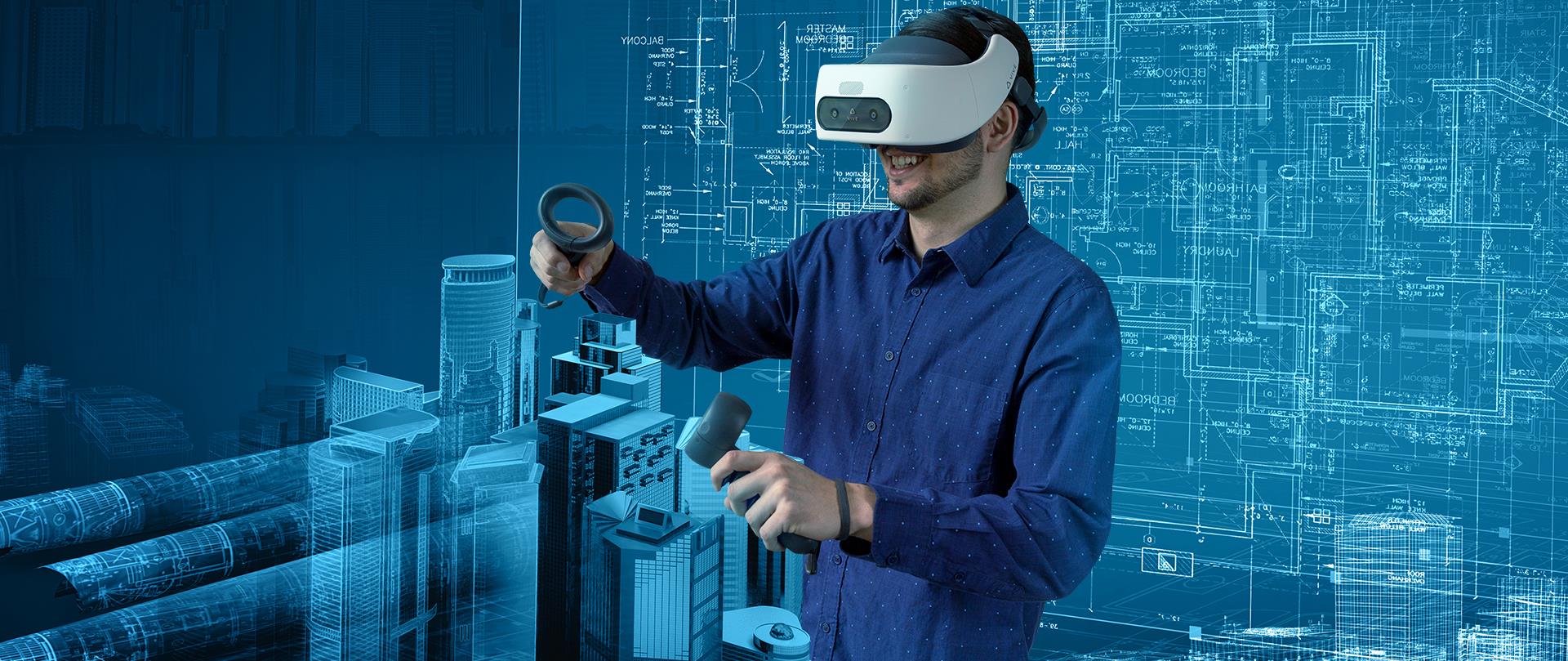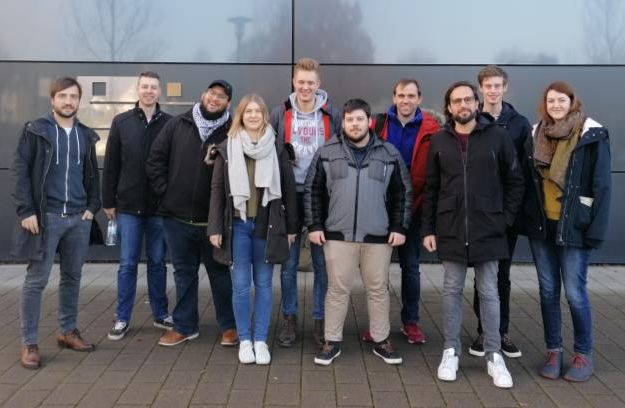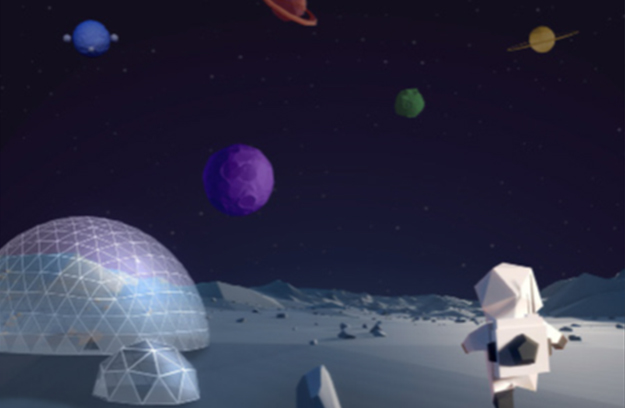Preliminary work: Software project Winter 2019/ 2020
In an international project together with Hoogeschool PXL in Belgium a team of 8 students started working on the use of VR for Design Thinking. The students started analyzing the design thinking process and identified potentials for VR to support the activities. The students decided to use space and planets as their design theme. The result of the project is a first collaborative application covering the Ideation phase of Design Thinking. On the virtual Ideation planet ideas can be planted as trees and branches. The application runs on Oculus Quest devices at the moment. It supports collaborative work from different locations and for example uses speech-to-text to efficiently give text input. The ideation is just one of six phases and there is a lot more to be developed in the future.
The goal of this project group is to further develop the VR application and provide support for the other phases of the Design Thinking process. So initially a further analysis and identification of potentials is necessary. Based on that a concept for the use of VR is to be created. VR should be used with all its innovative and outstanding features to support creative work free of physical limits to make Design Thinking better than it is in reality. For this new ways of working together virtually need to be developed. Furthermore 3D models, interactive animations and intuitive user interfaces are required. A special focus should be on using VR to provide functionalities or methods that are not possible in reality. It's all about creativity and innovative ideas.
 Fraunhofer-Institut für
Fraunhofer-Institut für 





